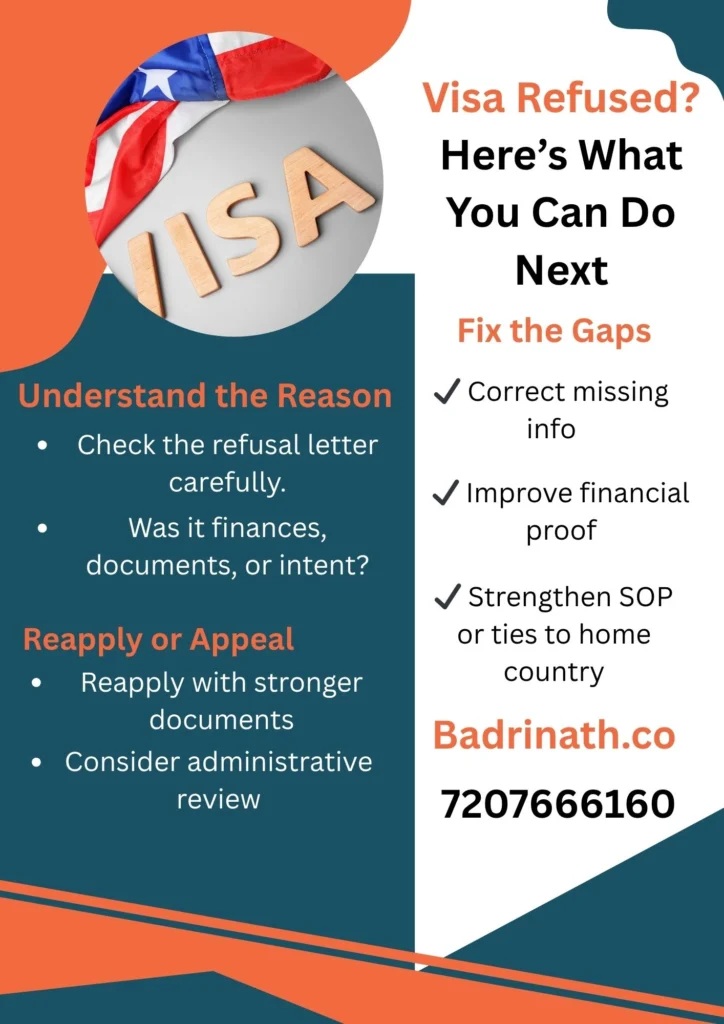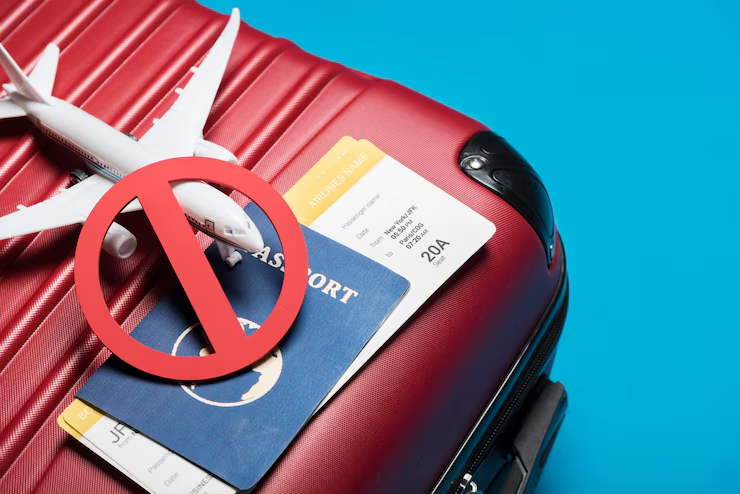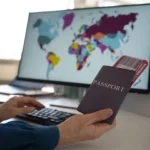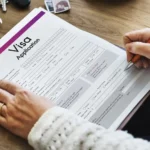Receiving a visa refusal can be deeply disappointing, especially when you’ve invested time, money, and hope into your application. But a rejection is not the end—it’s an opportunity to reassess, correct, and reapply strategically. In this comprehensive guide, we break down exactly what you can do next if your visa is refused, empowering you to turn this temporary setback into a future success.

Understand the Reasons Behind the Refusal
Before making any decision, it’s vital to understand why your visa was refused. The refusal letter will typically cite the sections of law under which your application was denied. Some of the most common reasons include:
- Insufficient financial proof
- Inconsistent or missing documentation
- Failure to demonstrate strong ties to home country
- Doubts about the purpose of travel
- Previous immigration violations
- Suspicion of fraudulent documents
Read the refusal letter carefully, underline the refusal codes or reasons, and seek clarity where needed.
Request a Review or Appeal (If Available)
Depending on the country and visa type, you may have the right to appeal or request an administrative review. This step allows you to challenge the decision without submitting a completely new application. Here’s what you need to do:
- Check the eligibility for appeal (some visa types like UK student visas allow it)
- Submit the appeal within the deadline (usually within 28–30 days)
- Provide supporting documents that directly address the reasons for refusal
Tip: Get assistance from a licensed immigration consultant or lawyer when preparing your appeal documents.
Lodge a New Application
If appeals are not an option or you’d rather not wait, you can submit a fresh visa application. However, reapplying without making changes to your previous application will likely lead to another refusal.
Before reapplying:
- Identify and address every point of refusal
- Update or add new supporting documents
- Improve your personal and financial documentation
- Write a stronger cover letter or Statement of Purpose (SOP)
Make sure you clearly show what’s changed since your last application.
Consult an Expert or Visa Consultant
Visa applications involve a complex mix of legal, procedural, and documentation standards. A professional consultant or immigration lawyer can:
- Evaluate your application from an expert’s perspective
- Spot weaknesses and inconsistencies
- Help prepare a stronger reapplication
- Guide you on alternate visa categories (e.g., work visa instead of tourist visa)
Investing in a reputable consultant can drastically improve your success rate, especially if you’ve faced multiple refusals.
Strengthen Your Financial Documentation
One of the most common reasons for refusal is a lack of convincing financial resources. Here’s how to strengthen your financial documents:
- Submit bank statements with clear transactions for at least the last 6 months
- Include tax returns (ITRs), salary slips, and investment proof
- Avoid large, unexplained deposits
- If sponsored, include the sponsor’s income proof, employment letters, and relationship proof
Always aim to prove financial stability and capability beyond just the minimum threshold.
Improve Your Ties to Your Home Country
Visa officers need to be assured that you will return to your home country after your visit. Here’s how to strengthen this aspect:
- Provide employment letters or job contracts showing return commitments
- Include property ownership or rental agreements
- Submit family ties documentation (marriage certificate, children’s documents, etc.)
- Mention educational enrolment’s or ongoing business commitments
Each of these strengthens your case as a genuine temporary entrant.
Write a Stronger Cover Letter or Statement of Purpose (SOP)
A compelling cover letter or SOP can be the difference between rejection and approval. Here’s what makes it strong:
- Clearly explain the purpose of your visit
- Address the previous reasons for refusal
- Describe how you have rectified the gaps
- Showcase intent to comply with visa conditions
- Use professional tone and grammar
Pro tip: Get your SOP reviewed by a professional editor or immigration advisor.
Consider an Alternative Visa Type or Destination
If your visa application continues to face refusals, it might be wise to:
- Apply under a different visa category that better suits your profile
- Explore alternate countries with less stringent visa criteria
- Apply for short-term visas first to build travel history
Some countries offer simplified visa options for students, skilled workers, or digital nomads. Be flexible and strategic in your planning.
Maintain a Clean Immigration History
Every application you submit adds to your immigration record. Multiple refusals can hurt your chances long-term, so moving forward:
- Be truthful in all your answers
- Avoid over-explaining or giving conflicting information
- Never submit forged or misleading documents
- Declare past refusals clearly if required
Maintaining transparency andconsistency is key to building long-term immigration credibility.
Wait for the Right Time to Reapply
Sometimes, the best action is to pause and rebuild your profile before reapplying. For example:
- Wait until your financial situation improves
- Gain stronger employment status or educational background
- Travel to visa-friendly countries to build your travel history
Visa officers often look for maturity, readiness, and responsibility in applicants. Time can be your ally if used wisely.

Keep Records of All Communications
Always keep a copy of:
- Refusal letters
- Submitted applications
- Receipts of payments
- Correspondence with the embassy or consultants
These documents help you track patterns, avoid repeated mistakes, and ensure clarity in future applications.
Final Thoughts: Be Strategic, Not Desperate
A visa refusal is painful—but not permanent. With the right approach, expert guidance, and strategic preparation, your next attempt can lead to success. Learn from the refusal, rebuild your case, and apply with confidence.
External links:
Know Why Student Visa Gets Rejected & Tips to Avoid






